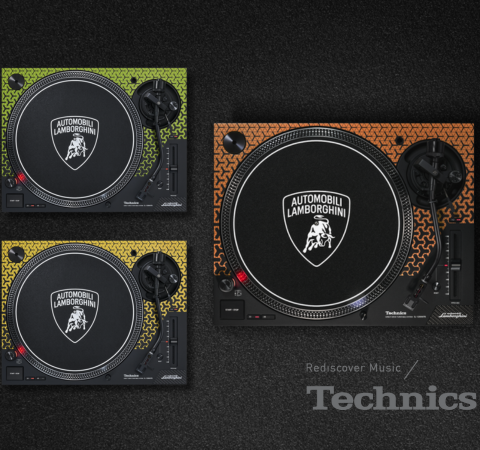 AS MUCH AS technology has transformed the way we work and play, there’s a hidden gotcha lurking that most of us give little if any thought to. You might have your entire life stored on a smartphone, tablet or PC, but does that doesn’t guarantee that it’ll be accessible to you in 20 years time.
AS MUCH AS technology has transformed the way we work and play, there’s a hidden gotcha lurking that most of us give little if any thought to. You might have your entire life stored on a smartphone, tablet or PC, but does that doesn’t guarantee that it’ll be accessible to you in 20 years time.
Twenty years ago an Apple 2+ was my go-to machine. It was pretty crude by today’s standards (how does a Single core 1.35 MHZ CPU grab you?) but was still a great machine (at least until it caught fire, but that’s another story). I had a tonne of documents stored on mountainous pile of 5.25-inch floppy diskettes.
This was rudely driven home the other day. I’d stumbled on a cardboard box filled with old 5.25-inch diskettes when I was cleaning out the attic. As much as I’d love to access them, my beloved Apple 2+ became unusable and was thrown out after it decided to give an impromptu BBQ impersonation. With it went the only 5.25-inch floppy disk drives I owned.
My legacy data issues are of course small beer compared to those facing businesses. Back in the day, punch cards were the means of storing data. Assuming that the punch cards haven’t perished, most businesses have long since upgraded and moved on. It’d be fair to say that this old data is most likely gone for good.
Adding further complexity to this sticky tech wreck are the legal requirements facing businesses. NZ businesses must keep and store tax related documentation for seven years and wage records for six years. This might not sound like a long time, but in tech terms seven years is an eternity, given the sheer pace of change in the sector.
Businesses aside, accessing and preserving old data is still a growing problem for us mere consumers. As we store more and more of our lives on gadgets, we run the risk of not being able to access this information in the future.
Our personal data might not be as important as the records of a corporation, but some info is more important than others.
If your house were to burn down, you’d most likely lose little sleep over a scorched tax return. This said, I’d wager that you’d consider running back inside to grab photo albums.
This isn’t rocket science either. People love photos. They keep memories alive and can re-kindle emotio ns and help you re-live events.
ns and help you re-live events.
According to Fujifilm us Kiwis shoot 1.2 billion photos per year. That’s just with smartphones, so the actual number will be even bigger when other cameras get factored into The mix. Fujifilm also estimate that 20 million photos get lost every year in New Zealand.
While services such as Google+ for Android and iCloud for iPhones provide an online backup service for photos, they also have a downside.
Cloud back-ups of photos may get stored offsite in a secure data centre on the other side of the planet, but you have little control over them once they’re uploaded.
Shonky terms and conditions that are subject to sneaky changes could see your photos shared with third parties or even sold. Business failure or service closure could also see all your backed-up snaps vanishing in a puff of digital smoke.
The seriousness of this hasn’t escaped Vint Cerf. As the vice president of Google, Vince is pretty concerned, saying that people should print photos or risk losing them for good:
“This is starting to happen to people who are saving a lot of their digital photographs because they are just files of bits. The file system doesn’t know how to interpret them, you need software to do that. Now you’ve lost the photograph in effect. If there are pictures that you really, really care about then creating a physical instance is probably a good idea. Print them out, literally”.
need software to do that. Now you’ve lost the photograph in effect. If there are pictures that you really, really care about then creating a physical instance is probably a good idea. Print them out, literally”.
So should we print out every photo we take? I’d take a wild punt by saying nope. Photos of that new puppy or from your little one’s first birthday may rate a printed copy, but of the 1200 photos Fujifilm estimate Kiwis store on smartphones, only 10 percent are ever printed.
There’s a good reason for this. In this age of social media, chronic over-sharing makes for a whole lot of photos that are barely interesting when viewed at a later date out of context.
Either way I’d wager that the odds are good that you won’t give a damn about that photo of a plate of spag bog you knocked out back in 2012.
 The other issue which makes me a somewhat less than enthusiastic about printing photos is cost. Inkjet inks are insanely expensive. According to pixartprinting.co.uk, printer ink costs as much as US$4285 per litre, making it more pricey than the same volume of Chanel No.5 (US$1600 per litre) or Johnnie Walker whiskey (US$1112 per litre).
The other issue which makes me a somewhat less than enthusiastic about printing photos is cost. Inkjet inks are insanely expensive. According to pixartprinting.co.uk, printer ink costs as much as US$4285 per litre, making it more pricey than the same volume of Chanel No.5 (US$1600 per litre) or Johnnie Walker whiskey (US$1112 per litre).
Add in the cost of glossy photo paper and it soon becomes obvious that printing out all photos stored on your smart phone just stack up.
Vint may have the final solution – he reckons we need to look seriously at preserving a legacy operating system so old data can still be viewed in 20 years time. The only problem with this idea is that debate around choosing which OS is adopted as a “standard legacy operating system” will probably take another 20 years as Windows, Linux and Apple fan boys slog it out online in an endless series of pointless and increasingly heated pissing contests. PAT PILCHER














